By Afghanistan Independent Human Rights Commission
Download this report in PDF format
Introduction
 According to the history, entrance of Kochies to the central parts of the country and use of its pastures goes back to late nineteenth and early twentieth century. Utilization of these pastures by Kochies was combined with destructive fights and devastating conflicts which have victimized countless people up till now. Kochies claim that utilization of these pastures in the central areas by them is based on the decisions made by the pervious rulers in Afghanistan and they consider it as their right. On the other hand, the local people justify that utilization of these pastures are the rights of native inhabitants of these areas and the decisions held by the previous rulers have no legal legitimacy, because these decisions were based on discrimination and cruelty and combined with ominous political aims and are contrary to principles of the present Afghan Constitution. Taking into consideration the ragged and mountainous terrain of the central areas, cultivated land is very limited in this region and the only source of income and livelihood of the local people is animal husbandry which totally depends on these pastures.
According to the history, entrance of Kochies to the central parts of the country and use of its pastures goes back to late nineteenth and early twentieth century. Utilization of these pastures by Kochies was combined with destructive fights and devastating conflicts which have victimized countless people up till now. Kochies claim that utilization of these pastures in the central areas by them is based on the decisions made by the pervious rulers in Afghanistan and they consider it as their right. On the other hand, the local people justify that utilization of these pastures are the rights of native inhabitants of these areas and the decisions held by the previous rulers have no legal legitimacy, because these decisions were based on discrimination and cruelty and combined with ominous political aims and are contrary to principles of the present Afghan Constitution. Taking into consideration the ragged and mountainous terrain of the central areas, cultivated land is very limited in this region and the only source of income and livelihood of the local people is animal husbandry which totally depends on these pastures.
Another undeniable fact is that during different periods of history, some political circles have used these conflicts for their own political interests and have tried to intensify it. This conflict once again has been intensified during the recent years through interventions of some political circles and has gained more tribal and political nature. The issues between Kochies and the local people in Behsood and Diamir Dad districts cause numerous problems, life and material casualties for the conflicting sides every year. In 1382, the local people agreed that Kochies can stay in Behsood only for that year as guests, but in the year 1383, as a result of a clash occurred in the area, one local inhabitant was killed. Another person was killed in 1384. The fights and armed conflicts in 1387 caused displacement of some local people and brought about material casualties, but had no life casualty. In 1368, eleven local inhabitants were killed and fifteen others including four women were injured during the fight and also one thousand nine hundred families became displaced from this area. The Kochies also claimed that one of them was killed during that year. In 1387, the scope of this conflict father expanded and caused heavier life and material casualties, twenty four local people were killed and eleven others were injured. More than six thousand families were forced to leave their homes and their native areas, around eighty four houses were burned and people’s properties were looted, a large number of livestock were missed and agricultural products were destroyed and schools and local clinics stopped functioning and heavy damages were inflict on the local people.
Similarly, the Kochies claimed that thirty men of them were killed and forty two others were injured, but they did not present any documents to prove their claim and no independent sources approved this claim1. In 1388, due to holding of presidential elections, Kochies did not come to these areas. Therefore, no clashes took place. And the people spent the season of conflicts in tranquility.
During the current year, on 24/1/1389, the Kochies proceeded to the border areas of Hesa-e-Awal and Dowom of Behsood and Daimir Dad districts and wanted to enter these districts. After four minor clashes with the local people, finally a sever fight broke out between the two sides which continued till 28/2/1389. The current year fight caused tremendous human and material casualties which will be elaborated as following.
Afghanistan Independent Human Rights Commission closely observed this conflict through its regional office in Bamyan and followed precisely the cases of Human Rights violations emanated from this conflict. The Commission has provided impartial and documentary reports about this conflict every year to make an effort for preventing the repetition of this human catastrophe. Unfortunately, in spite of repetition of this arm conflict every year, which has inflected heavy casualties and calamities on the people, the state of Afghanistan has been indifferent against the lawful and documentary recommendations of the Afghanistan Independent Human Rights Commission, and passed by this case. It has taken no effective step for permanent solution of this issue. Carelessness and irresponsible attitude of the state in this regard has caused the repetition of this armed conflict.
Afghanistan Independent Human Rights Commission sent many fact-finding groups from its regional office in Bamyan to the districts of Hesa-e-Awal, Hessa –e-Dowom of Behsood and Daimir Dad during this year to follow the case directly and precisely. The findings of this report are based on direct observation of this case made by the commission’s staff, and the inflicted casualties on the local people. During this investigation, interviews have been conducted with hundreds of eyewitnesses, local state authorities, representatives of the people in the Provincial Council of Maidan Wardak province and the displaced people. They have visited tens of affected villages (burned houses, looted villages and the graves of victims).
It is worth mentioning that during many working trips to Behsood and Diamirdad districts, the dispatched delegation of the Afghanistan Independent Human Rights Commission made efforts to contact the Kochies and obtain their views about the conflict and the inflicted casualties to be included in this report, but they did not succeed to contact and get the views of Kochies. But the office of Afghanistan Independent Human Rights Commission in Kabul met with the representatives of Kochies in Kabul on 6/4/1389 and their views have also been reflected in this report2.
Eyewitnesses and case details of the conflict during the year 1389
Based on the statements presented by the eyewitnesses and state authorities, on 24 Hamal 1389, Kochies together with their herds of sheep and camels came to the border areas of Heas-e-Awal and Dowoom of Behsood and Daimir Dad districts. After four minor clashes (on 10/2/1389 in the area of Dahst-e-Gola, on 17/2/1389 in the area of Sia Qarkh Hesa-e-Dowoom Behsood, on 12 /2/1389 in the area of Kor Basta, on 14/2/1389 in the areas of Yaka Chah and Kabootar Khana of Daimirdad district) which had no casualties, finally on 26/2/1389, fight started in the area of Qarqad located in Daimir Dad district. On 28/2/1389, the state sent a high-ranking delegation included the Vice President, Interior Minister, Chief of Staff of the Ministry of Defense and a number of authorities from Maidan Wardak province headed by the second Vice President to settle the problem. The armed conflict ended through their decision and issuance of a presidential decree.
Similarly on 30/2/1389 the president of Islamic state of Afghanistan, by issuing a decree confirmed the decision taken by the delegation dispatched to the area by the central government. The decree emphasized once again that the Kochies should start evacuation of the occupied and conflicting territories on the same day (30/2/1389). On 26/2/1389 around seventy soldiers of the national army were dispatched and deployed to the areas of Tizak and Daimir Dad (war zones). On 27/2/1389 around 86 soldiers of the national army were deployed in the areas of Mirhazar related to Hesa –e-Dowoom of Behsood district. On 30/2 1389 around 384 policemen from the national police force stationed in the areas of Qawm-e-Abdul Khaliq and covered the area of Tizak in Hesa-e-Awal Behsood district to monitor the war zone. In spite of the decision made by the high-ranking state delegation and the presidential decree on immediate evacuation of Kochies from the areas in Hesa-e-Awal and Dowoom Behsood and Daimir Dad district and deployment of the national army and the national police forces to impose cease fire and to implement the presidential decree, the Kochies delayed their evacuation of the said areas till 9/3/1389 and resorted to looting and burning of the houses in some areas as witnessed by the delegation of AIHRC and indicated in the statements by the eyewitnesses. In spite of the credible documents, evidences and direct eyewitnesses of the commission delegation in this regard, the representatives of Kochies in the parliament rejected the inflected damages on the local people.
District-wise observation of the affected areas:
A- Hesa –e-Awal Behsood district: (6/3/1389)
The AIHRC dispatched delegation to Hesa –e-Awal Behsood district on 8/3/1389 directly visited thirty-one large and small villages and took pictures for documentation of the case. These villages included Dahan –e-Garmab or Qawm –e-Abdul Khaliq, Gandab, Qool Chakar, Qala –e-Lala, Dahan Ab Lataband, Qala –e-Morad Khan, Dewali, Qala –e-Madad, Dahan Qool Tizak, Dahan Shor Abak, Elahi Tizak, Sayed Mohammad, Kota Ashoor Mohammad, Gharha, Ab Paran, Dasht-e-Tizak, Ghawchak, Dasht Payeen, Ghulaman, Dahan Nake, Qool Bakhshi, Jawkar , and Tizak.
In addition to the above mentioned areas, the villages of Dahan-e-Abpai, Kota-e-Mulah, Kote-e- Sirak, Zer Hessar, Qala Giran, Khurbaid village, Dahan Kharbaid and Pistee were visited by the commission’s delegation. These villages were totally deserted and all doors and windows of the houses were broken and the properties were looted. As a sample we evaluate the situation of four of the villages which were visited by the commission’s delegation:
1- Dahan Garmab village or Qawm Abdul Khaliq: (8/3/1389)
Around thirty families are living in this village. All the inhabitants of this village were displaced and most of them displaced to Kabul and a limited number of them took shelter in safer villages of Behsood district. One clinic, a school and one religious Madrasa were active in this village. All the equipments and properties of these establishments were looted as a result of the attack by Kochies and one house consisting of two rooms together with many piles (Dey3) of fire-wood were burned. The mosque and Madrasa of this village located beside each other. Due to lack of school building, the students used this building as their school. The mosque, school and Madrasa were looted and the villagers stated that forty pieces of carpet, thirteen big pots and other utensils together with school equipments were taken away form these establishments.
It is worth mentioning that during this survey, the area was totally deserted and in many villages the commission staff could not find anyone to work as their guide. Finally the commission staff succeeded to find a person called Ali Yawar son of Bostan Ali, a resident of Dahan Garmab in Hesa-e-Awal Behsood district to cooperate with the staff of the commission and to give information about the villages adjacent to Garmab village.
2- Diwali Village: (8/3/1389)
According to the statement by Ali Yawar, a resident of the village, around thirty families are living in this village. During our observation, we witnessed that the windows of all the houses were broken and one house consisting of eight rooms were burned. The properties of mosque and houses of the people were totally looted; many piles of fire-wood were burned. The villagers stated that the doors and windows of a guest house built by the National Solidarity, were broken and all the properties of the guest house were looted by the Kochies.
3- Qala-e-Madad village: (8/3/1389)
A villager (Mohammad Huussain son of Taj Mohammad a resident of this village) stated that thirteen families are living in this village. In addition to looting the properties of the houses, one mill together with fifty sucks of wheat were looted. All equipments of Imam Hassan high school were taken away, the doors and windows of the school were broken and all fire-woods in the village were burned.
4- Tizak: (10/3/1389)
According to the statements presented by two of the local people (Asef son of Abdul and Zafar son of Abdul Hussain residents of Tizak area of Hesa-e-Awal Behsood), around sixty families are living in the areas around Tizak bazaar. In addition to looting of houses, one school and one clinic were looted and the windows and doors were broken. A three year old girl called Habiba daughter of Mohammad Baqer were killed and her mother got injured in this area 3.
A number of shops, a bakery and a hotel were looted or burned in Tizak bazaar by Kochies which are listed as following: One mill belonging to Zafar son of Abdul Hussain, one shop belonging to Zafar son of Abdul Hussain, one radio workshop belonging to Dawlat son of Haji Hussain Ali, one shop belonging to Haji Haidar son of Haji Khuda Bakhsh, one bakery belonging to Haji Haidar son of Haji Khuda Bakhsh, one shop belonging to Assef son of Abdul, one hotel belonging to Asef son of Abdul, one shop belonging to Sultan son of Zamen Ali, one store belonging to Salman son of Zamen, one shop belonging to Haji Mohammad Ali son of Haji Boaman, three shops belonging to Haji Ramazan which were burned, one shop belonging to Sofi Asadullah son of Haji Shafa, one workshop belonging to Rassul son of Ghulam were looted.
According to the findings of the delegation sent by administration of Maidan Wardak province to survey the damages, around one hundred villages were affected in Hessa –e- Awal district of Behsood and more than 1015 families were forced to displace from their houses. Out of them seven hundred sixty five families were seriously affected and all their properties were looted and a number of their houses were burned. 4
In the areas related to Hesa-e-Awal of Behsood district a total of three inhabitances were killed and one injured. Sixteen schools were closed and six of them were looted. Similarly two clinics were looted and their doors and windows were broken.
B- Hesa –e-Dowom of Behsood district: (7/3/1389)
Based on the findings of the AIHRC staffs, Hesa-e-Dowom Behsood district in comparison to Hesa-e-Awal Behsood district and Daimirdad, is less affected and a few villages were damaged. The dispatched delegation of the commission to this district visited seven affected villages (villages of Qool Abagha, Qala-e-Paien, Qala –e-Boghondak, Bala hesar , Cheshma-e-Taghi, Dahan Khalil Morda and Dahan Baghak) on 7/3/1389. The obtained information was documented by pictures and recording the interviews with the eyewitnesses. It is worth mentioning that during this survey all the affected areas of Hesa-e-Dowom Behsood district were deserted. All the inhabitants of these villages were displaced. Some of the house and piles of fire-wood were burned and the equipments and properties of the families were looted. As an example, here we mention three affected villages which were visited by the commission staff:
1- Cheshma Taghi: (7/3/1389) according to the statements by Mohammad son of Ishaq a resident of Cheshama Taghi, around eight families are living in this village. While visiting this village, it was observed that all doors and windows of the houses were broken and their properties were looted. In addition to looting the properties of the houses, one shop was looted and another shop, a store and one mill were totally burned down, the specification of which has been mentioned in the table.
2-Dahan-e- Khalil Morda village (7/3/1389): According to Mohammad son of Sayed Mohammad, a native of Dahan –e-Khalil Morda village, four families are living in this village. While visiting this village, the commission delegation found out that all inhabitants of this village were displaced, one house consisting of two rooms together with two piles of fire wood was burned down and the house properties were looted.
3- Dahan Baghak village: (7/3/1389)
According to the statement by Mohammad son of Sayed Mohammad a resident of Dahan-e-Khalil Morda, sixteen families are living in this village. Eyewitnesses of the commission staff show that properties of the people after breaking the locks and windows of the houses were totally looted and in addition one room together with two piles of fire-wood was burned and one shop and its storehouse was looted. This person stated that in addition to the above mentioned villages, the villages of Dahan-e-Gandab, Qaraqol Jan, Zard Sang, Baghak and Ghojorak valley totally resided by 41 families were deserted and all the house properties were looted and the doors and windows of the houses were broken. In Kajab valley related to Hesa-e-Dowom Behsood, a total of 90 small and large villages exist. In addition to Kajab valley, Badasiab, Kharqol, Sabz Darakht and the areas of Azhdar were deserted. According to the findings by the damage survey team of Maidan Wardak province, a total of 850 families were displaced in Hesa-e-Dowom Behsood district, out of them ninety one families related to Hesa-e-Dowom Behsood district were seriously affected. Their properties and livestock were looted and a number of their houses were burned.
C- Daimirdad district: (9 to 10/3/1389)
The commission staff visited thirty eight small and large affected villages in Daimirdad district. In the majority of villages, houses and piles of fire-wood and hay were burned. The people’s properties were totally looted. The villages of Garmab (upper and lower) Qarqad, Gedargo-e- Olia and Sufla, Dam Qorak, Sia Khawal, Bodak, Kota-e- Band Naqshin, Zard Argeen, Naqshin, Surkh Kana Gak, Dahan Errganak, Qala –e-Molayem, El Dastam, Fakhra, Dasht-e-Qaderoo, Dasht-e-Naw, Safid Qada, Baghalak, Shahyar, Jaw Qoolak, Kota Afghan, Gardan Hesar, Sar Koh, Yak Roia, Safid Nahoor, Tangi, Diwal, Chaka Khoor Sofal, Chaka Khoor Paein, Ghojarak, Bikh Koh, Qool Banoy Ulia, Qool Banoy Sufla, Pass Qool, Kota Mullah, Sar Qash, Qool Dada, Jawaz Sang, are the affected villages which were observed by the commission’s staff and the damages were documented.
The villages of Gidar Goy Sofla, Qotan Ulia and Sufla and some other small and large villages were not observed and surveyed due to security problems. As an example, we evaluate four of the following affected villages:
1- Villages of Garm Aab (Ulia and Sufla): (9/3/1389)
Sayed Amanullah son of Sayed Faqir a resident of the area stated during the survey of Garm Aab Bala and Paein that these two villages located in a valley. Before this fight twenty one families were living in both villages. As a result of this fight, all of them were displaced. The observations by the commission’s staff shows that nine houses and one mosque were burned in this village. All agricultural products of the farmers were destroyed by the herds of sheep belonging to Kochies and their properties were looted. A number of the local people who had recently returned to the area stated that all the livestock of the villagers have been looted by Kochies. During this incident the local people came under a surprise attack and they could not take out their livestock and properties before the war broke out.
2-Qar Qad village: (9/3/1389)
Sayed Aman son of Sayed Faqir an inhabitant of this area stated that nineteen families are living in this village and all of them are displaced now. The Kochies started their attacks from this area and they burned the piles of fire wood to create panic in the villages and as a result all the villagers left the village during the dark night without taking their properties and livestock with them and they fled away from the area. In addition to displacement of the villagers and looting of their properties, a total of seven piles of fire wood and one store full of hay were burned by Kochies. A number of the villagers who had recently returned to the village stated that all their livestock were taken away by Kochies and all their cultivated lands were destroyed by the Kochies’ herds of sheep and camels. On 9 Jawaza 1389, the commission staff went to the area and observed that herds of camels and sheep of the Kochies were grazing on the farms in the villages. One mosque was partially burned.
3- Sia Khawal village: (10/3/1389)
According to Shaikh Kazem son of Bahman Ali and Sayed Hashim son of Aman residents of Dam Qorak, around twenty six families were living in this village. All the villagers are displaced. All of their properties including one shop were looted and four houses were burned. The statement by the said persons indicated that people could not take out their livestock and properties and all their livestock and properties were taken away by the Kochies.
4- Qala-e-Molaiem village: (10/3/1389)
Taqiee son of Ewaz a native of Qala-e-Molaiem village whose merchandize in the shop were totally burned down stated that around thirty eight families are living in this village and all of them are displaced now. All properties of the villagers were looted and eight houses and one shop were burned and also six other shops were looted a list of which is as following: one shop belonging to Taqee son of Ewaz (this shop was totally burned together with its merchandize), one shop belonging to Gharib Ali son of Kalbi Hassan, one shop belonging to Ramazan son of Hussain Ali (all its merchandize were looted), one shop belonging to Rostam son of Qurban Ali, one shop belonging to Mohammad Hussain son of Shaikh Barat (he was also killed), were totally looted.
Based on the direct observation of the commission staff, the district of Daimirdad has been affected more than other areas as a result of this fight. The findings by the damages survey team from Maidan Wardak province show that more than one hundred thirty small and large villages in this district have been affected. Six schools and one clinic have been closed5 and all of their properties were destroyed. Three persons were killed and four others were wounded in this district and around two hundred twenty six families became displaced and the local people in the said areas have lost all of their properties.
Sum up of the findings:
- Based on the findings by the AIHRC staff, six local people (three persons from Hesa-e-Awal Behsood and three others from Daimirdad district) were killed during this fight, mostly on 26/2/1389. Among them were a three year old girl called Habiba. It is worth mentioning that the dead bodies remained in the mountains for many days. For example the dead body of Shaikh Barat son of Abdullah was missing till 11/3/1389 and he was not buried.
- During this fight, six villagers were wounded. Among the wounded people were also children and women. A complete identity list of the wounded people is included in the table attached to this document. ? According to the findings by the AIHRC staff and evaluation made by the damage survey team of Maidan Wardak province, during this fight a total of 2791 families from the three districts of Hesa-e-Awal, Hesa-e-Dowom of Behsood district and Daimirdad (1015 families from Hesa-e-Awal district, 850 families form Hesa-e-Dowom and 926 families from Daimirdad ) were displaced and moved towards other provinces and Kabul city. Among them 1782 families (765 families from Hesa –e-Awal Behsood, 91 families from Hesa –e-Dowom Behsood and 926 families from Daimirdad) in addition to displacement, have lost their properties and a large number of their houses have been burned down.
- Around 340 small and large villages in three districts (120 villages in Hesa-e-Awal Behsood, 90 villages in Hesa –e-Dowom Behsood and 130 villages in Daimirdad) were totally deserted during this fight. The area was totally evacuated when the delegation form Bamyan regional office visited the area. Among them one hundred eighty villages in all three districts have been severely affected. The houses of villagers were looted and some of the houses were burned down. And in some areas their agricultural products were destroyed by herds of sheep belonging to Kochies.
- The findings by the commission’s regional office in Bamyan show that one hundred fifty three houses in three districts of Hesa-e-Awal, Hesa-e-Dowom of Behsood and Dimirdad were burned down which include three hundred twenty three residential rooms. Pictures of the burned houses and full identity of their owners in each village and district have been provided and registered in a table attached to this report. ? Thirty five schools have been closed in the three districts and the doors and windows of most of these schools were broken and their equipments were destroyed. As a result more than 5450 students are deprived of their right to education. It is worth mentioning that the students of these schools had been victims of these conflicts during the previous years and for long periods they had been deprived of their rights to education.
- As a result of this fight, four clinics have been closed and their doors and windows were broken and the medicine and other facilities of the clinics were looted and destroyed.
- Due to huge and widespread damages inflected on the houses, looting of properties and facilities of the families destruction of agriculture, losing of livestock, it was difficult for the delegation in the regional office of Bamyan to provide an exact figure of the casualties. ? Representatives of Kochies in the parliament and members of the commission for settlement of the Kochies’ problems claimed in their controversial statement that as a result of this fight one Kochi was killed and two others were wounded and still other four Kochies together with five hundred sheep and a number of camels are missing. They also claimed that as a result of returning, the Kochies and their livestock were deprived of water and fodder and some of their livestock were destroyed. They claimed that damages costing ten million Afghanis have been inflected on them, while the state has paid them two million Afghanis as reparation. The AIHRC delegation demanded the documents regarding the damages inflected on the Kochies, but they stated that there is no precise information about the damages. The AIHRC on 16/4/1389 once again contacted Haji Kako Zai member of the commission for settlement of Kochie’s problems and asked him for documents and evidences to prove their claims. He stated that the Kochies are scattered in different provinces and can not provide reliable documents. Haji Kako Zai mentioned to the commission the name of a killed person called Babrak and the names of missing persons each one Aman son of Gula Khan from Bahram Kahil tribe, Zaman son of Shir Zaman from Dawlat Zai tribe, La Khabar son of Rahem Del form Akor Khail tribe, Almar son of Gul Mar from Hussain Khail tribe. It is worth mentioning that except presenting the name of one killed person and the missing people, he did not provide any document to prove their claim and this claim of Kochies has not been approved by any independent source.
- Although the Kochies had reached the borders of Hesa-e-Awal and Hesa –e-Dowom of Behsood and Daimirdad districts on 24/1/1389 and there was probability of a fight, the central government and the local government in Maidan Wardak province held no effective measure to prevent the fight between the conflicting sides. As a result of carelessness of the government the fight broke out on 26/2/1389. The representatives of Kochies accepted that both conflicting sides were armed, but the Kochies claimed that they had already disarmed the local people and surrendered their weapons to the government. ? In spit of the fact that fights in the district of Behsood and Daimirdad have accord repeatedly since long years during which clear violations of human rights and numerous crimes were committed, but the government (the local and central government) have never taken a step to investigate and document these crimes and legally prosecute the criminals. The local authorities state that investigation in this regard is beyond their capacity.
- As it is mentioned, the first group of the national army forces deployed in the affected areas and the presidential decree issued on 28/2/1389 to make immediate cease fire and none of the conflicting sides should resort to aggression, but the findings by the delegation of the AIHRC indicate that looting and burning of the houses in the villages continued till complete evacuation of Kochies from the area on 9/3/1389 and the national army forces did not prevent looting of the house in the districts of Daimirdad and Hesa-e-Awal Behsood. Some of the national army officers stated to the commission staff that they have been ordered not to intervene and they should act impartially.
- Both representatives of Kochies and the local people of Behsood blame the central government and consider that they are involved in continuation of armed conflicts. Both sides severely criticize the central government that they do not seek a permanent settlement of the issue and deals with this issue for political interests.
Conclusion:
During this year fight, 6 local people were killed and 6 others were wounded, more than 2791 families from the three districts were displaced and the properties of most families were looted. Around 153 houses consisting of 323 rooms belonging to the local people were completely burned, 35 schools were closed as a result of which around 5450 students were deprived of their right to education and heavy damages were inflected on the local people as a result of looting their houses, missing of their livestock, destruction of their agriculture, closure of schools and clinics.
In this incident, the right to human integrity, the right to life, the right to property, the right to education, the right of access to health services, the right to personal security of many Afghan citizens was violated and many villagers were forced to displace. Based on articles 6, 23, 22, 24, 38, 40, 43 and 52 of the Afghan Constitution, other national laws and international human rights conventions is the state is obliged to observe and protect the human rights of Afghan citizens. Based on the text of this report, the state has not abided by its commitments and obligations regarding human rights of the citizens and did not take effective and on time measures. In reality, this incident is a clear violation of human rights. Although during this conflict many of human rights were violated and numerous crimes were committed, the central state and the local government in Maidan Wardak province have made no effort for investigation and documentation of these crimes and the perpetrators have not been prosecuted. There are no files of this conflict in the provincial attorney office related to the previous years. The government’s lack of attention to this case during the past years, has caused continuation of this conflict, intensification of tribal discriminations, revival of the culture of war, weakening of the sate sovereignty and has impede the process of nation and state building. As a consequence, not only one tribe, but all the people and political system in the country would be affected.
Recommendations
1. As the report indicates, during this year’s fight more than 340 villages in three districts of Hessa-e-Awal, Hessa-e-Dowm and Diamirdad district were displaced and more than 180 villages in the three districts were severely affected. The inhabitants of these areas need urgent humanitarian assistance to renovate and revive their living conditions to some extent. Therefore, the state of Afghanistan, national and international charity organizations should assist the affected displaced people and based on the presidential decree take steps for reparation of the damages to prevent a human catastrophe.
2. For just and fair reparation of the damages inflected on the local people, the state of Afghanistan should carry out an all-sided investigation and evaluation of the situation and take proper measures in this regard.
3. As it is mentioned in this report, conflict has been continuing between the local people and Kochies since long years and caused numerous crimes, but the state has not taken any step for documentation, investigation of the case and legal prosecution of the perpetrators. Therefore, in order to end the culture of impunity and escaping from the law, the state should carry out investigation about the crimes committed during this fight and legally prosecute the perpetrators. In this way, assure the Afghan people that there is no impunity for the perpetrators.
4. Since many year, different weapons have been used in these fights, therefore, the state should take serious steps for disarming the illegal armed groups who enflame this conflict.
5. The AIHRC reiterates its pervious recommendations for the permanent and political solution of this issue, and obliges the state to implement article fourteen of the Afghan Constitution for “improvement of agriculture, livestock breading, economic, and social and welfare conditions of the farmers and settlement of Kochies and design effective programs.” Therefore, once again the state is requested to honestly take steps for permanent solution of this issue, prevention of warlordism, tribal discrimination and ending the culture of impunity and to consolidate the rule of law through implementation of article fourteen of the constitution and the recent presidential decree to prevent repetition of this conflict in the coming years.
6. As it was mentioned in the presidential decree, the Kochies should have been settled in three months, but still no practical step has been taken in this regard. Therefore, the state is requested to expedite this process.
7. Taking into consideration the effective role of international community and the United Nations in maintenance of peace, stability and development in Afghanistan, it is suggested to seriously and effectively support the state of Afghanistan to fulfill its commitments regarding promotion and protection of the citizens’ rights.
Appendix 1
Names of those killed and injured in the conflict between Nomades and residents of the area in the districts of Hesa-e Awal-e Behsood and Daimerdad
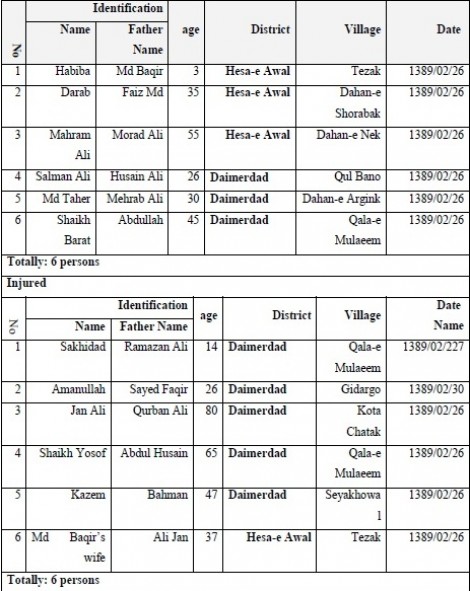
Appendix 2
Totally 153 houses composed of 323 rooms
Note: the names of some owners are not known, because, during the visit of the area no body has been present in the area.
Attached No. 3
List of the schools that had become closed
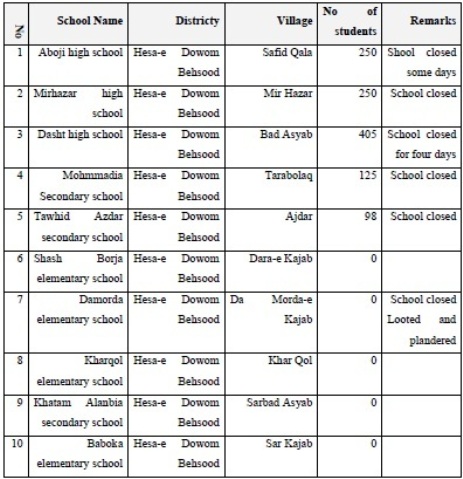
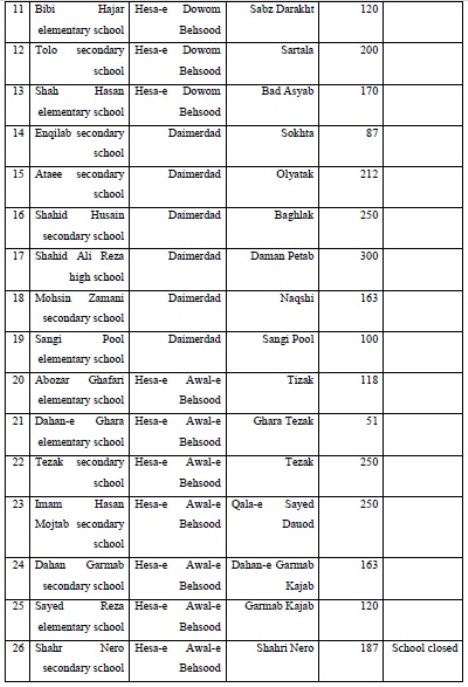
Totlly 35 schools were closed and more than 5450 students couldn’ t continue their studies
Numbre of stuents in some school are indicated as zero, because we couldn’t get access to those in charge of the said school.
Appendix 5.
Pictuers
It should be noted that all the pictures are taken by our coulleagues in Bamyan Regional Office.
Picture of some of the graves of those killed
Tomb of Darab Ali son of Faiz Md in Dahan Shorabak village in district of Hesa-e Awal- Behsood
Tomb of Salman Ali son of Husain Ali, Qulbano village in Daimerdad district
____________________________
Source: http://www.kabulpress.org
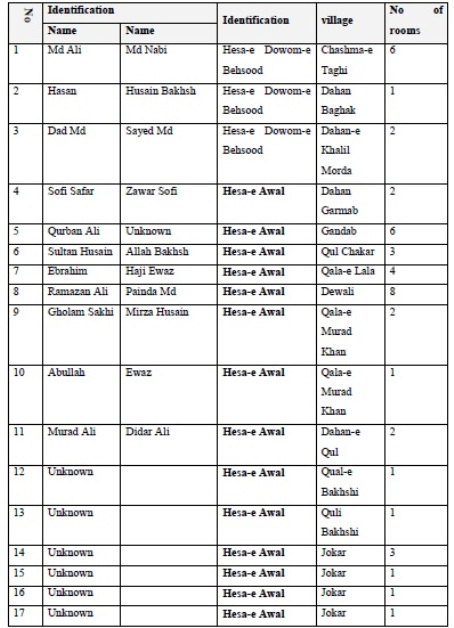
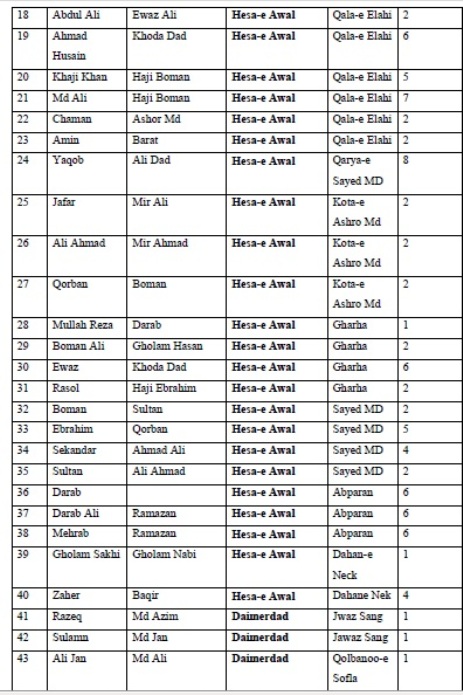
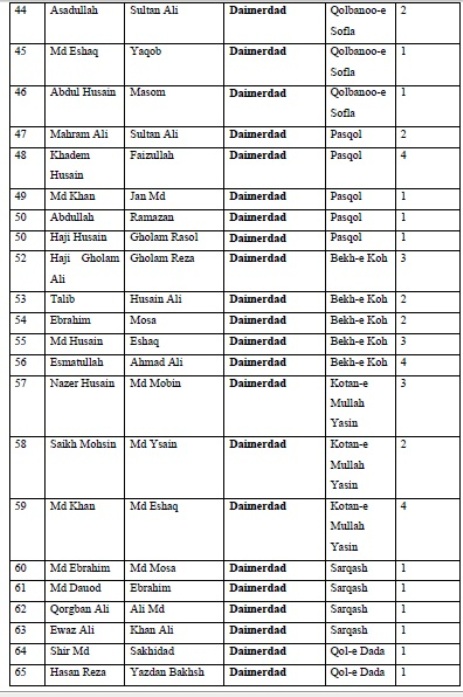
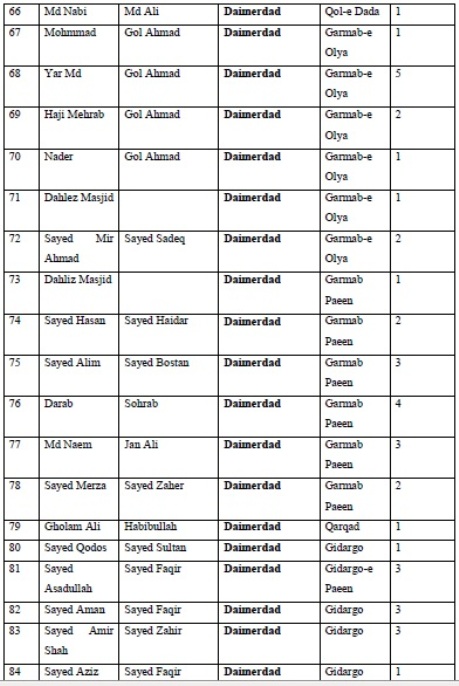
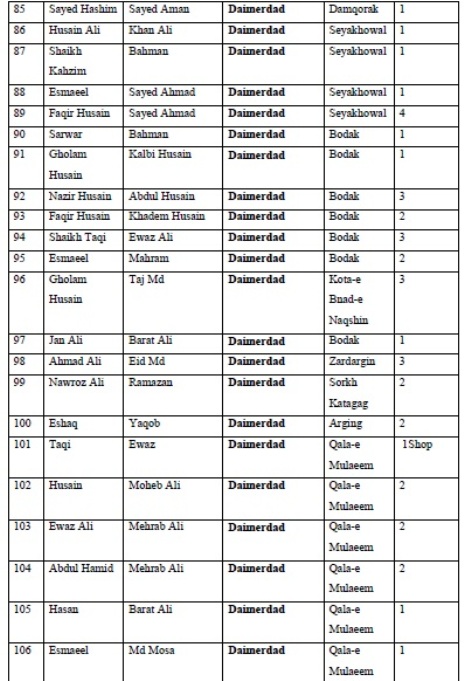
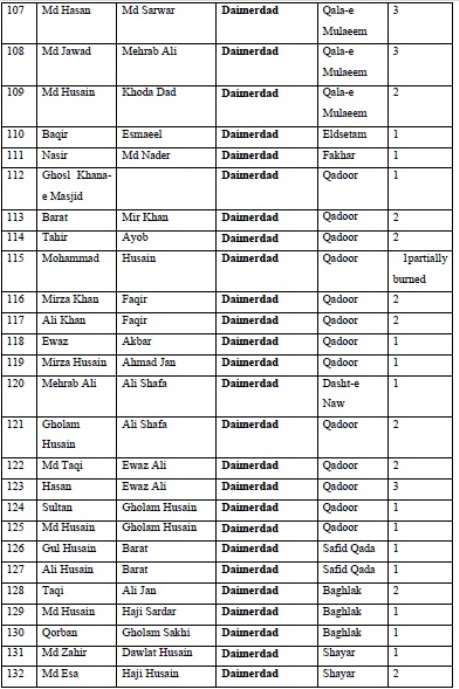
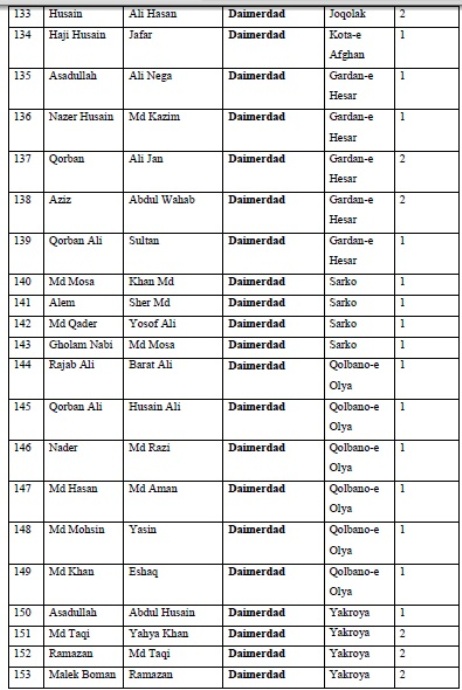
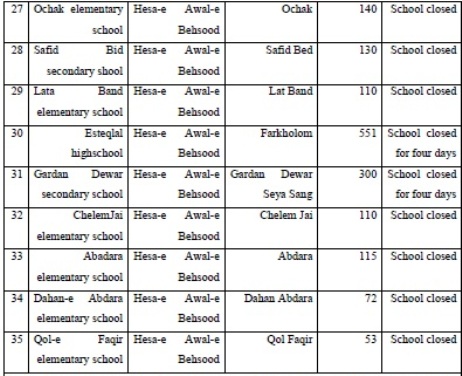
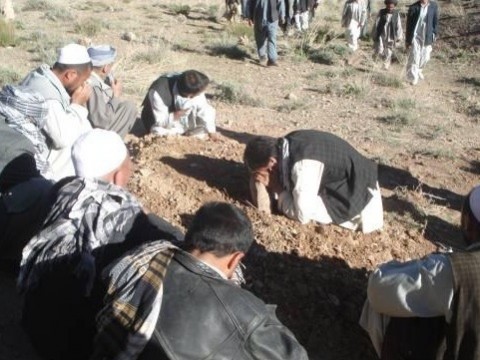
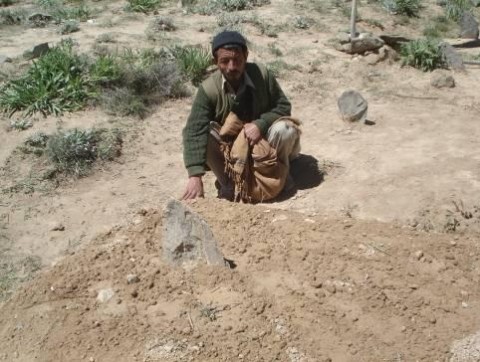
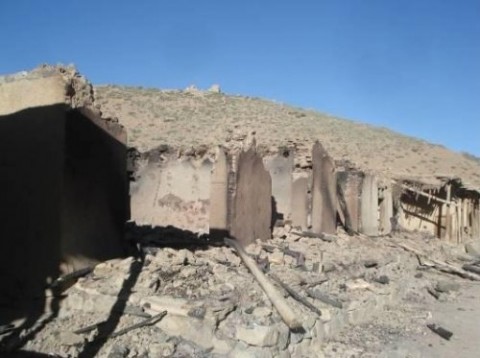
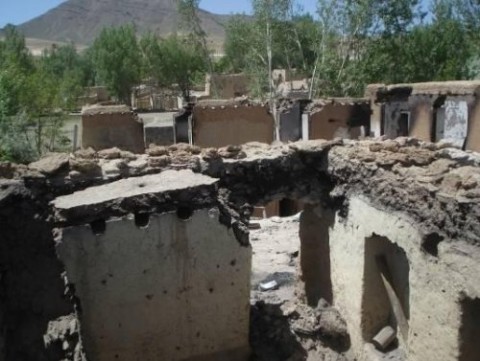
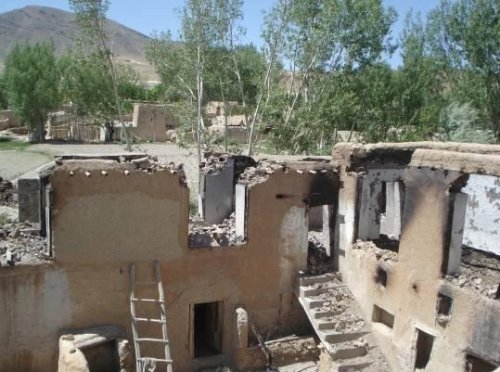
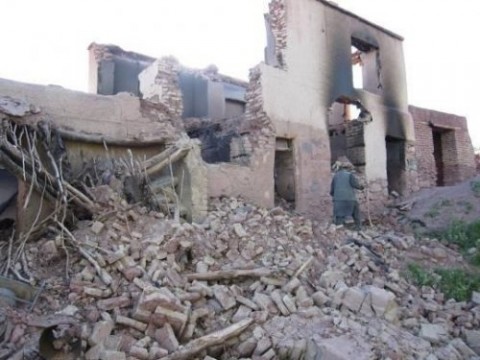
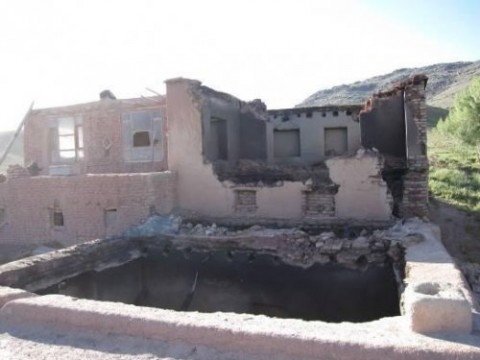
Aamir Ali
i blamed hazaras first is that we are minority, i mean we are shias. Look around in afghanistan uzbeks and turkmens are less than hazaras in numbers but they never treated bad like us. Listen my dear fellows what’s in religon, there is nothing in shia islam we have to leave this sect and join the main stream islam if we want to avoid being assaulted. i think this will save our nation from genocide. How long we will run for safe place to australia canada.
abdul
lanath baar Zalim lanath baar Talibans (Kochi talibans)
faizullah
We should want our rights.and seprate our homeland by the name of hazaraistan.We all know that from every they want to finished hazara….
haider khan
i am a pashtun and love my nation. i accept all the ills committed against the hazara nation. this is not warranted and i condemn this brutal act. people responsible for such atrocities should be brought to justice and be made an example of. my land Afghanistan can not be a happy place till the time one nation is suppressed by another. i stand with the hazara in this moment of injustice and grief and call for those in the corridors of power to act without delay and mercy against the perpetrators.
sadeq
these tyranic and ill_minded ,sick_natured people throughout the shamefull and facist historyand governing proved that they can not keep up with living in world and advances,due to its rooted_living in suburbs and isolated areas,bcz,theyre in lack of educations, knowlege,morality,and human insperations ,so they dont know how to profit an ordinary life and living.the whole world is trying to creat, innovate and push towards future and prosperity but pashtoons are steping bachwards to their shamefull history and violation they made.,theyre taught to kill and to get killed.they even dont know the culture of interactions and co_existance with others.now is the era of informations and communications,all nations build_up a central goverment and ask thier demands from authorithies,but still believe in stone_age era of killing and occupying.with all mentioned aboves,till misery,violation,old thoughts are removed from heads,and not filled insperation, education etc..how one expect them to act humanly?we need to empower self aqainst all these devils.
sharif Hamdam
Meticulously assessing the grave plight of the Hazaras for the last 150 years, paricularly for the last 30 years, one can conclude that it is the Hazaras themselves who are largely to blame for disastrous events they have suffered at the hands of their sworn enemies.
They have failed to think and devise a plan to create and put an effective mechanism in place under which all Hazaras be brought together and form one unified, powerful system in order to sageguard all the Hazaras against their vengeful foes.
It is proven throughout the history of mankind that if you are weak and powerless, you are doomed to suffer and likely to be wiped out from the face of earth. that is exactly what Hazaras have been exposed to. If our people and leaders again fail to come together and fail to establish a centralization and come up with a well-thought-out plan for the empowerment of this agonized people, this miserable and humilating situation is likely to continue for decades to come.
SO, HURRY AND DO SOME THING REAL BEYOND WORDS AND SLOGANS IF YOU REALLY LOVE YOUR DIGNITY AND THE DIGNITY OF YOUR PEOPLE.
SHARIF HAMDAM
MELBOURNE
mehdi jaghorii
adam ki bibena ayanda hazara be chara bazz ami asta ale mibenam mardom ma che kar mekona dar an ruz ha faghat mashen new mekhara wa khana new joor mosha . aga da yak mantaga tokh kanim da 100 khana yak khana ham aslaha na dara shumo fakar monin amiracan ya kashwar hai europai wa qaira baraye hamesha dar afgahnistan hast na agar mahsat onha pora shona ya amruz wa 10 sal pass afghnistan ra ela kada mora bazz da eee wasat ki da meyan momna taleban amzi yali amadagi girafti aga khuda nahasta taliban por shona ami wazi ki 400 sal pish bale hazara awarda bod azi batar she mayra oo zaman amo mashan to magra da khanii new to zandagi mona … mo mardom khalii nadan hastam khuda ayanda mo ra bakhair kana ….//////—– nalat khuda bar pashton sag khar ha ………….. zanda bad hazara jan jan jan
ali raza
jinayati kuchi jinayati imrooz ni asta e jinayati 400 salla asta da muddati 400 sall 65 darsat zimini hazara ra qabiz asta wa da mudati 400sall 62 darsad mardumi hazara ra koshto khun kada jinayati kochi hamish dar sir parasti jinayat kari pakistan musha pakistan yag buzurg kishwari turarist asta wa az pakistan tamami dwnya khatar dara wa bayad UN itami pakistan ra ba dasti khud bigera , dar jinayati kochi jawab she gilem jamha mida amutar ki qahramani hazara shir muhammad baig ki lashakari dashat ba nami zindagi baizar ki habib ullah khan wa amanulah khan ra ki jinayat she ra juwabd, bayad bisyar da zudi az ghazni, baisud, urazgan, qandahar, hilmand pashton bairun shawad,
Muhammad Juma
ya Khudawand buzurg o bartar faqat 1 iltemas az tu daram ki nasli khenzeer yahood pashtoon ra dar in donya wa akhirat in qadar besuzan ke fikresh kar kona zuloom bar mazloom ….. Lanat bar Pashtoon yahoodi sag nasal .